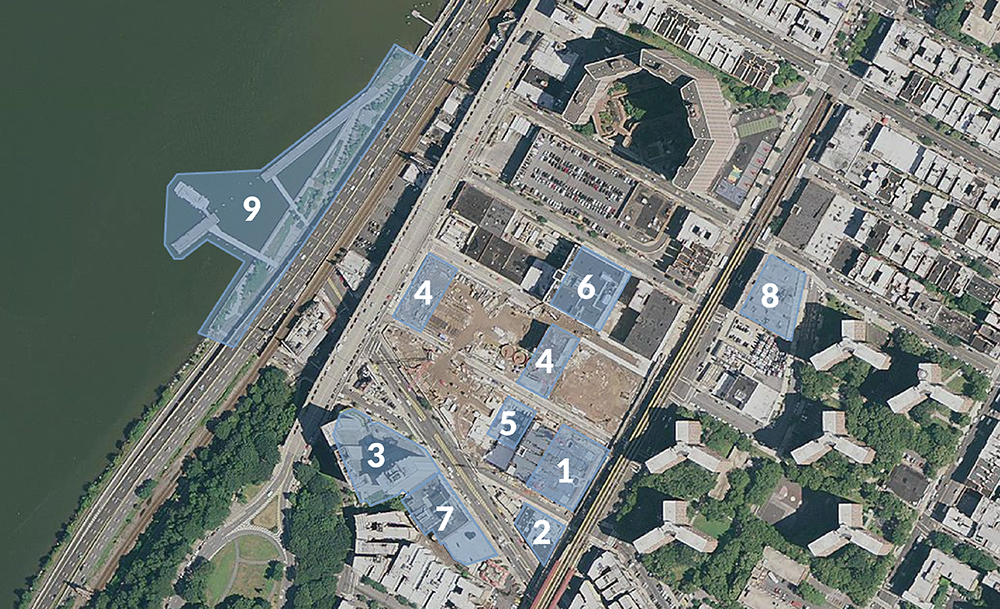In 2003, Columbia University announced a long-term plan to revitalize West Harlem by constructing a new campus and integrating them with the rest of the area. Delving into real-estate data, this project is aiming at exploring how the market is looking at the value that could be added to the area from the new campus.
Named after the neighborhood itself, Manhattanville Campus planning includes raising new building to host classrooms and research centres, as well as transferring existing Schools, such as the Columbia Business School. Most important, Manhattanville Campus planning, which acquired final approval from New York State authorities in 2009, includes rezoning several blocks of the area, by creating a "campus for urban life". Treelines, open public spaces, pathways, restaraunts and retail stores are part of the Campus plan, which will be publicly accessible, as under the design no gates will be built around it.

|
Manhattanville Campus aerial. |
|
Manhattanville campus will be constructed on a Columbia University-owned 17-acre land, stretching along Broadway west to 12th Avenue from the triangle where 125th Street crosses 129th Street north to 133rd Street—and on the east side of Broadway from 131st to 134th Street. The Renzo Piano's modern design, inspired by elements of the neighborhood, such as the Riverside Drive viaduct on the 12th Avenue, have already spurred a heated debate among the academic community and the general public about the new Campus and its integration with the economic, social, and cultural life of West Harlem and Manhattan. Usually, real-estate is a safe enough indicator for estimating the impact a project like Manhattanville Campus, or any other human activity for that matter, might have to a given area or community. On the Manhattanville Campus case, analysis based on data available from Zillow (a online marketplace for buying or renting houses) show that although the values of homes in ZIP codes adjacent to Manhattanville Campus and listed on Zillow are going up, they don't grow as fast as the home values in the rest of Manhattan, in terms of absolute values per square foot. Only 2 ZIP Codes are among the 20 highest performing ZIP codes, with the 10024 code in Upper West Side, being the 8th most expensive one in entire Manhattan (among the ZIP codes Zillow is providing data for) in May 2017. |
|
Only 2 ZIP Codes around Manhattanville Campus among Manhattan's Most Expensive |

|

|
Home Values in rest of Harlem are Going Up Faster Than ZIPs around Manhattanville Campus |
|
Following the general trend in real-estate market of Manhattan, the area around Manhattanville Campus started with an average home value per sq ft. of over $200 in January 2004, rised up until 2008, went down during the recession, and since then has been steadily going up, to reach a values of of over $1,000 in May 2017. |
|
Manhattanville Campus Changes Similarly Over Time with Rest of Manhattan |

|
|
|
|
|
So far, from the proposed Columbia University plan, only the Jerome L. Greene Science Center has been erect and the horizon for the reconstruction of the area is decades-long. The performance so far of the real-estate market around the Manhattanville Campus area show the future potential the area might have; as property values around the Campus is still not growing as fast as the rest of Manhattan, opportunities might lie for investing in the area before the vibrant ecosystem of students, residents and visitors the University is planning up comes together. |
